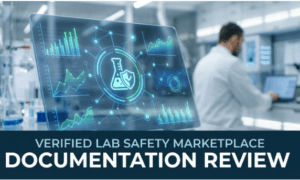In an era where digital transformation is reshaping industries, the work of Venkatesh Nagubathula stands as a testament to the power of innovation in enterprise document automation. His research outlines a comprehensive technical framework for cloud-based SaaS solutions, revolutionizing how businesses integrate automated document processing into their workflows.
The Shift to Intelligent Document Automation
Traditional document processing has long been a bottleneck for businesses, consuming vast amounts of time and resources. However, advancements in cloud infrastructure, containerized deployment, and AI-powered automation have streamlined document workflows, enabling enterprises to process data with unprecedented efficiency. By leveraging API gateways and microservices architecture, organizations can now seamlessly integrate document automation into their existing ecosystems, ensuring faster processing times and improved accuracy.
AI-Powered Document Processing Engines
One of the most groundbreaking aspects of this framework is its use of artificial intelligence for document classification, extraction, and validation. Machine learning models, including convolutional neural networks (CNNs) and natural language processing (NLP), enable precise data extraction from structured and unstructured documents alike. Optical character recognition (OCR) has evolved to recognize text with near-human accuracy, significantly reducing manual intervention and error rates in industries that rely on complex document processing.
Additionally, advancements in explainable AI (XAI) ensure transparency in decision-making, allowing businesses to trust automated processes while maintaining accountability. By integrating AI models with real-time monitoring and error-detection mechanisms, organizations can fine-tune document processing engines for maximum accuracy and compliance.
Scalability Through Cloud and Edge Computing
With document volumes increasing exponentially, businesses require systems that dynamically scale. The implementation of Kubernetes-based auto-scaling clusters ensures that processing workloads are balanced efficiently, reducing infrastructure costs and enhancing operational flexibility. Additionally, edge computing plays a vital role in reducing latency, allowing document validation and pre-processing to occur closer to data sources, minimizing network congestion and improving response times.
Another key development in scalability is the implementation of distributed AI models that enable localized processing while ensuring central oversight. This decentralized approach enhances security and reduces dependency on a single processing node, ensuring seamless performance even under heavy workloads.
Strengthening Security and Compliance
Security remains a primary concern in document automation, particularly for industries handling sensitive data. The integration of zero-trust architectures, end-to-end encryption, and blockchain-based audit trails ensures data integrity and compliance with regulatory standards. Automated compliance verification frameworks help enterprises mitigate risks, reducing violations and minimizing legal exposure.
By incorporating AI-driven anomaly detection, organizations can identify potential security threats before they escalate. Real-time alerts and adaptive security enhance protection against cyberattacks, ensuring workflows remain resilient against evolving threats.
Industry-Specific Implementations
Different industries face unique challenges in document processing, requiring tailored solutions. Financial services benefit from AI-driven fraud detection and automated regulatory reporting, significantly cutting compliance costs. Healthcare organizations leverage document automation for seamless integration with electronic health records (EHRs), improving patient data accessibility and reducing administrative burdens. In the legal sector, AI-powered contract analysis and e-discovery tools enhance efficiency, reducing document review times and improving case outcomes.
The manufacturing and supply chain industries leverage document automation to optimize logistics, manage procurement contracts, and ensure regulatory compliance. AI-driven automation enhances efficiency, reducing paperwork and manual errors while accelerating turnaround times.
The Road Ahead: Emerging Technologies
As document automation evolves, emerging technologies such as quantum machine learning, federated learning, and smart document formats promise to enhance efficiency. Quantum computing’s potential to process vast datasets at unprecedented speeds could redefine classification and search capabilities. Meanwhile, federated learning enables secure AI model training across organizations without compromising data privacy, a crucial feature in industries with stringent compliance requirements.
Furthermore, the integration of semantic search and advanced knowledge graphs will revolutionize how organizations access and retrieve information from document repositories. These technologies will enable intelligent indexing, ensuring critical information is easily accessible, enhancing decision-making and business intelligence.
In conclusion, Venkatesh Nagubathula’s research highlights the transformative potential of document automation in enterprise integration. By combining cutting-edge AI, cloud scalability, and robust security frameworks, businesses can streamline their workflows, reduce operational costs, and enhance decision-making. As automation technologies continue to advance, organizations that adopt these innovations will gain a significant competitive advantage in an increasingly data-driven world.

































